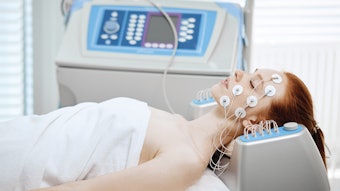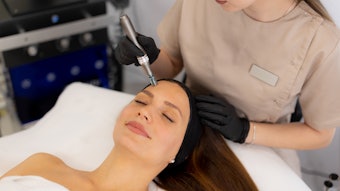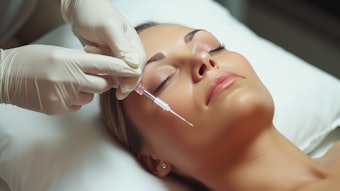
Editor's note: The opinions expressed in this Viewpoint are those of the author and not necessarily those of Skin Inc. magazine.
As Americans debate healthcare reform and elected officials search for methods of funding the proposed $1 trillion public option healthcare plan, cosmetic medicine has been thrust to the forefront of the conversation as a vehicle for generating revenue. Known as the “Botax,” the tax would charge a 5% tax not just on Botox*, but on all “cosmetic” medical procedures performed by licensed medical professionals.
This is not the first time such an idea has been proposed. A similar bill was signed into law in New Jersey in 2004. However, it has fallen far short of expectations. Having collected 59% less than what was projected and costing three-to-four dollars in government expense for every dollar collected, its failings have resulted in its attempted repeal, led by assembly member and original bill sponsor, Joseph Cryan. However, Governor Jon Corzine vetoed the repeal, and the law remains in place.
Sin taxes
The concept of taxing products and services that are considered self-indulgences is not new. Sumptuary taxes—or “sin taxes”—on cigarettes, alcohol and gambling started as early as the 18th century when the early U.S. government taxed whisky and tobacco. Sin taxes are justified by many as penalizing taxes on socially tolerated ills that are both financially and morally burdensome to the nation. Self-indulging behaviors are tolerated in the United States by a silent majority, despite the fact that alcohol and tobacco use can be deadly. Therefore, to justify the impact on society by penalizing and dissuading those that choose these vices makes argumentative sense. Although sin taxes have been deemed as worthy funding for important initiatives, cosmetic medicine has now been arbitrarily selected to join this celebrated group of self-fulfillment sins, based primarily on misconceptions.
Besides the bureaucratic nightmare, questionable feasibility and overt gender discrimination that relates to this proposed bill, an equally valid concern is the likely violation of personal freedoms, and the negative influence on one of the least publically understood, but perhaps one of the most valid fields of medicine in society. Before hastily including cosmetic medicine within the feast of sins from which to cipher a relatively small amount of revenue, a closer look at cosmetic medicine—its origin, role and impact on American society today—is warranted.
History of cosmetic medicine
If cosmetic medicine were a team, Botox would be its mascot. It is the most popular cosmetic treatment and has forever changed medicine; arguably, it has shaped a generation. Its breakthrough properties and subsequent popularity are partially responsible for the cosmetic tax even becoming a consideration. Before Botox, cosmetic medicine was a small, contained branch of reconstructive surgery centered on a few physicians per city catering to a niche population. However, much like the tremendous breakthrough influence antibiotics had on the way infections were approached and treated, steroids had on the management of acute and chronic inflammatory diseases, and insulin had on the mitigating morbidity and mortality of a highly perilous viscerally targeted autoimmune process, Botox has forever changed the way cosmetic medicine is measured, perceived and delivered.
Before, the niche population seeking aesthetic medicine was not considered representative of society as a whole, and conventional wisdom categorized this group as belonging to a single, higher-echelon socioeconomic class, self-absorbed or possibly seeking treatment for a personality disorder. It was not only elective, but also selective medicine, not designed or deliverable to the majority. However, a look back reveals the valuable role this cosmetic field has played—and continues to play—in society. Cosmetic medicine, yet to be defined, originated not as a treatment to enhance the beauty of the elite, but more as service trade allowing one to pass into society without discriminating characteristics. Beginning with the Romans and Greeks, plastic surgery allowed conquered nomadic populations to assimilate and hide evidence of nefarious pasts or memberships to unacceptable cults. In societies where nudity was celebrated, the first cosmetic surgeries were performed on early Hebrews, Egyptians and Phoenicians who desired circumcision reversal.
Cosmetic medicine philosophy and techniques didn’t change much thereafter, until the early 20th century when, following World War I, soldiers who survived battlefield injuries returned home with disfiguring facial wounds that prevented them from being comfortable in public. Much like the early Greeks and Romans, disenchanted post-World War I cosmetic surgery patients were the disfigured who wanted to return to society. They desired form, function and assimilation. One of the early post-World War I surgeons was Jacque Joseph, a surgeon living in Germany who was known for his skills at reconstructing complex facial wounds for veterans. He later translated his abilities and knowledge to alter characterizing facial features, such as the noses of healthy ethnic males and females wanting to look “more German.” And thus was born elective cosmetic surgery. However, the goal of this new trade was not perfecting the human form or achieving ultimate beauty, but making patients happy by allowing them the ability to integrate seamlessly into society.
However, following World War II and the advent of antibiotics and safer forms of anesthesia, cosmetic surgery migrated from a tool of inclusion to a tool of separation. Since the days of Nefertiti and Cleopatra, those who have felt they belong to the elite class of society used whatever they could to separate themselves from the underclass. Cosmetic medicine became an instrument of the privileged to flaunt their identities. Like many of the newest trends and fads in pop culture, it started with movie stars. Famous pinups, such as Marilyn Monroe and Rita Hayworth, were getting plastic surgery. Cosmetic medicine was used to separate the starlets from the common folk. No longer was it a vehicle to blend unnoticed into society; it was now being used to stand out. And cosmetic surgeons, in parallel, responded by offering physically altering treatments that were bold, large and sure to emphasize the sexually characterizing features of beauty and youth.
Cosmetic surgery lost some of its original application of allowing one to pass into society unnoticed, and became instead a tool to reinforce class distinction. Moreover, the ability to extend attractiveness or youthfulness beyond what was predetermined genetically became a possibility for an emerging upper class, perhaps leading to its current misrepresentation as a sin. In fact, it was Botox that spread cosmetic medicine to the masses. For the first time, working class individuals seeking cosmetic improvements entered into the market, and the demand has skyrocketed by more than 3,600% in just the last 10 years.1
The benefits of Botox
Besides the cosmetic improvement, patients were mentioning they received more favorable treatment from others after receiving Botox. This posed an interesting question: What was causing the perception of better treatment? Was it that after undergoing a cosmetic medical procedure, a person felt better and projected a better image, or was it that others perceived the treated person more favorably because they were physically more attractive?
It is well-known and researched that the subtleties humans find attractive in one another are often perceived at a subconscious level. Evolutionary biologists have done extensive studies validating the importance of certain physical characteristics, such as symmetry, youthfulness and body proportions, as important indicators of beauty and maximum fertility. Moreover, for hundreds of thousands of years, humans have been enhancing gender-specific character traits, whether it’s with clothes, makeup, perfumes or adornments, attempting to appear more fertile and attractive to potential mates. To the unknowing observer, people who get cosmetic medical treatments are thought to be more attractive, successful at dating and even better athletes.2
Perhaps the perceived improved treatment from others is not solely due to a physically improved appearance, but is a result of an invigorated self-esteem, resulting in the projection of a more favorable attitude thus reciprocated. A report published early this year indicated that cosmetic treatments alleviated symptoms of depression, and although this study was small and uncontrolled, it launched an interesting dilemma for further discussion.3 In a double-blind randomized placebo controlled study, patients who received Botox showed an improved quality of life at two weeks and up to three months after their treatment.4 It is easy to speculate that a person who feels better about the way she looks experiences an improved self-esteem, acts more confidently and enjoys a better quality of life. Furthermore, Botox has been shown to correlate with a positive increase in mood.5 In which case, would treating a disease that affects 9.5% percent of our population6 with cosmetic treatments or plastic surgery still be subjected to a cosmetic tax? Conversely, perhaps the 10 million Americans treated this year with cosmetic procedures1 can apply for a cosmetic tax exemption believing they suffer from a mood disorder. As the benefits of cosmetic surgery are beginning to be studied and objectively quantified, the definition of what is cosmetic becomes even more blurred.
Cosmetic quandaries
Although cosmetic medical treatments had been initially labeled as vain luxuries for the rich and famous to discuss while sipping champagne on their yachts, a closer look reveals that these treatments have a much bigger role for many individuals from all backgrounds. Yes, Botox can reduce wrinkles, but it also can provide facial symmetry to stroke victims, reduce migraine headaches and prevent excessive sweating. Once the theme of sci-fi movies, surgical facial transplants are now a reality, allowing hope to the severely disfigured society. Breast implants can effectively rescue an inherent feminine trait for the one in 26 women who will undergo cancer-curing mastectomies.7 Does a 50-year-old postmenopausal breast cancer survivor need her breast? No, not for survival, but certainly it is a critical quality of life and cosmetic issue. Will this be subjected to a cosmetic tax? Where do we draw the line between what is and what isn’t cosmetic? What about the 57% of females who suffer from balding8 or the 1.1 million HIV victims who experience facial wasting?9
These patients undergo treatments to alleviate the cosmetic effects of these conditions, none of which are medically necessary for survival, but all of which are cosmetic and quality of life issues.
And what of children whose ears stand out, or developing females with asymmetric breasts, or teenagers with acne? How about treatments for obesity? Is it or isn’t it a disease? If it is a disease, than will liposuction, stomach-stapling, and face lifts after massive weight loss be subjected to a cosmetic tax? Where does it stop?
Should we arbitrarily consider taxing other cosmetic indulgences, such as manicures, massages and eyebrow waxing? Who will decide what is and isn’t cosmetic: physicians, a government body or perhaps a cosmetic czar?
And if a physician, in attempts to protect his patients, doesn’t collect the tax according to the letter of the law and is subject to an audit, will patients’ records be subpoenaed and exposed to the public? Will privacy laws prevail or will Americans tolerate their individual freedoms being compromised in the name of a cosmetic tax?
No longer is cosmetic medicine a treatment limited to an elite class. The majority—90%—undergoing cosmetic medical procedures are now middle-class households earning less than $90,000 per year.10 And as benefits are becoming further established, more of the population wants to take part in them.
Botox and cosmetic procedures are becoming increasingly affordable. Cosmetic medicine today is a field of study providing improvement in quality of life issues for many Americans. The widespread availability, increasing competition and proven benefits have driven the price of nonsurgical cosmetic medical treatments closer to that of a haircut than that of a face lift. The effects of cosmetic medicine on society are just beginning to be realized, but if millions of Americans can enjoy a better quality of life, what impact would this have on their productivity, both at work and at home? It should seem obvious that a person who enjoys a better quality of life contributes more positively to society, both economically and emotionally. Unlike other sins that can be erosive to society, such as alcohol, cigarettes and arguably fast food, scientific and empirical evidence indicates cosmetic medicine can provide value and strength to society.
Purveyors of self-esteem
At a time when taxing cosmetic procedures is being debated and elected legislators may be in charge of judging what is or isn’t cosmetic, it is important to examine the effects cosmetic medicine has on both the individual and society with clear objectivity. Cosmetic medicine is not a field devoted to stretched faces, large breasts and thin tummies. The caricature of Pamela Anderson, Joan Rivers or Kenny Rogers is not the norm, and does not define the practice. Rather, it is a field of medicine that today is developing products and services that make people feel better about themselves.
Conventional wisdom likes to brand cosmetic physicians as purveyors of beauty, and this couldn’t be further from the truth. Our research and scope of medicine is targeted toward making the majority of Americans feel better about themselves with safe and effective treatment options. Cosmetic medicine provides congenitally, physically or emotionally traumatized victims a path for returning to society and being productive. In addition, it gives all socioeconomic classes additional tools to obtain improved qualities of life and satisfy one of the most primal human instincts: wanting to look good.
Cosmetic medicine is a field of medicine that is designing, developing and delivering treatments that provide a bolt of self-confidence to an individual and a surge of well-being that is beneficial, some might say essential, to society. The bureaucratic difficulties of instituting the tax, as well as the compromise of personal freedom and disproportionate targeting of the middle class, all point to an arbitrarily suggested and misguided tax. Encourage Americans to invest in themselves; don’t dissuade it.
*Botox is a trade name of Allergan, Inc., Irvine, CA
REFERENCES
1. www.plasticsurgery.org (Accessed Nov 30, 2009)
2. SH Dayan, ED Lieberman, NN Thakkar, KA Larimer, A Anstead, Botulinum toxin a can positively impact first impression, Dermatol Surg 34 Suppl 1:S 40–7 (June 2008)
3. E Finzi, E Wasserman, Treatment of depression with botulinum toxin A: a case series, Dermatol Surg 32(5) 645–9 (May 2006)
4. Unpublished data on file.
5. MB Lewis, PJ Bowler, Botulinum toxin cosmetic therapy correlates with a more positive mood, J Cosmet Dermatol 8(1) 24–6 (Mar 2009)
6. RC Kessler, WT Chiu, O Demler, EE Walters, Prevalence, severity, and comorbidity of twelve-month DSM-IV disorders in the National Comorbidity Survey Replication (NCS-R), Archives of General Psychiatry 62(6) 617–27 (June 2005)
7. M Morrow, R Jagsi, AK Alderman, JJ Griggs, ST Hawley, AS Hamilton, JJ Graff, SJ Katz, Surgeon recommendations and receipt of mastectomy for treatment of breast cancer, JAMA 14 302(14) 1551 (Oct 2009)
8. DC Gan, RD Sinclair, Prevalence of male and female pattern hair loss in Maryborough, J Investig Dermatol Symp Proc 10(3) 184–9 (Dec 2005)
9. Centers for Disease Control, HIV Prevalence Estimates—United States, 2006 MMWR 57(39) 3 (October 2008)
10. 2005 American Society of Plastic Surgery survey










